On August 1, 2024, students from a variety of undergraduate research programs at Lehigh University, including STEM-SI, presented their research posters to an audience of supporters, including parents, visitors, fellow students and Lehigh faculty and administrators, as well as a group of judges. Winners in four categories–Research, Poster Video Design, Oral Presentation, and a category new this year, Audience Choice–received gift cards.
The 95 posters/presentations showcased a rich variety of subjects, including animals ranging from cave fish to Canadian geese; energy issues from wind power to battery storage systems; and social concerns ranging from food insecurity to AI and news veracity.
Here’s a look at eight projects, with a few comments by the student researchers.
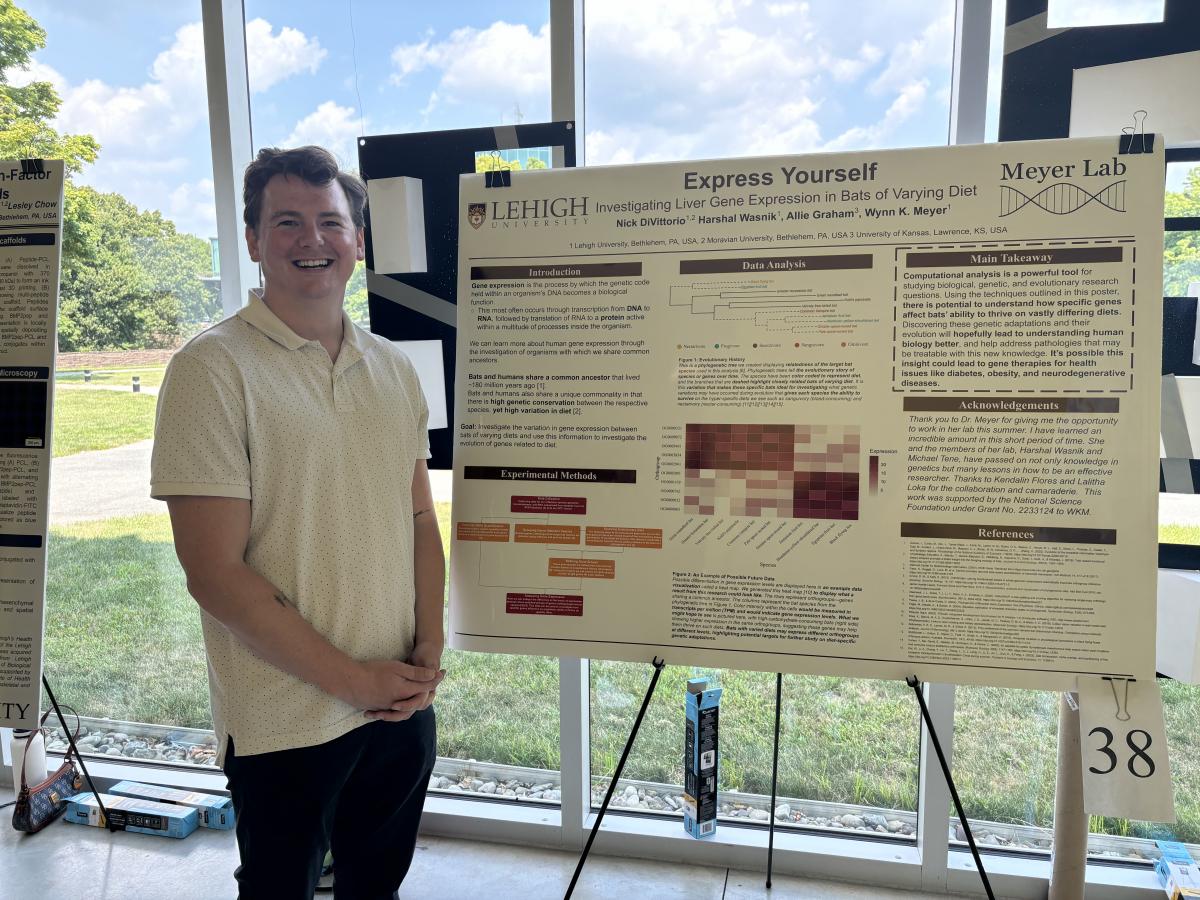
Nick DiVittorio, STEM-SI
“Evolution of Diet-Driven Gene Expression Patterns in Bats”
“I worked in Dr. Wynn Mayer’s lab over the summer. Her lab is an evolutionary genetics lab that uses computational methods to study the relationship between genetics and diet. So the project I specifically worked on looked at liver gene expression in bats of varying diets. Bats and humans did share a common ancestor, like all mammals, about 180 million years ago. So we will have some genes that carry over. But the things humans and bats share that is also unique is that we have a wide variety of diet.
“Gene expression is how we get from our DNA to biological processes. Why gene expression in the liver? It’s very important in metabolic processes, it’s also the organ that develops a lot of the proteins that end up in our blood. It’s also highly collected in the field, then is turned into DNA, RNA, protein sequencing data that we can pull from these databases online and we can use in our lab. Future scientists may be able to use the findings to develop gene therapies for diabetes and degenerative diseases.
“I didn’t know much about bats and I didn’t know much about genetics, or about computation, at the start of the summer. I’m actually a neuroscience major and I’m super grateful to have gotten into Dr. Meyer’s lab. She’s super knowledgeable not just on genetics but also about how to approach science and approach research and not give up and be okay with failure. I’ll definitely remember the way Dr. Meyer runs a lab…she’s able to be challenging and supportive, helping you improve.”
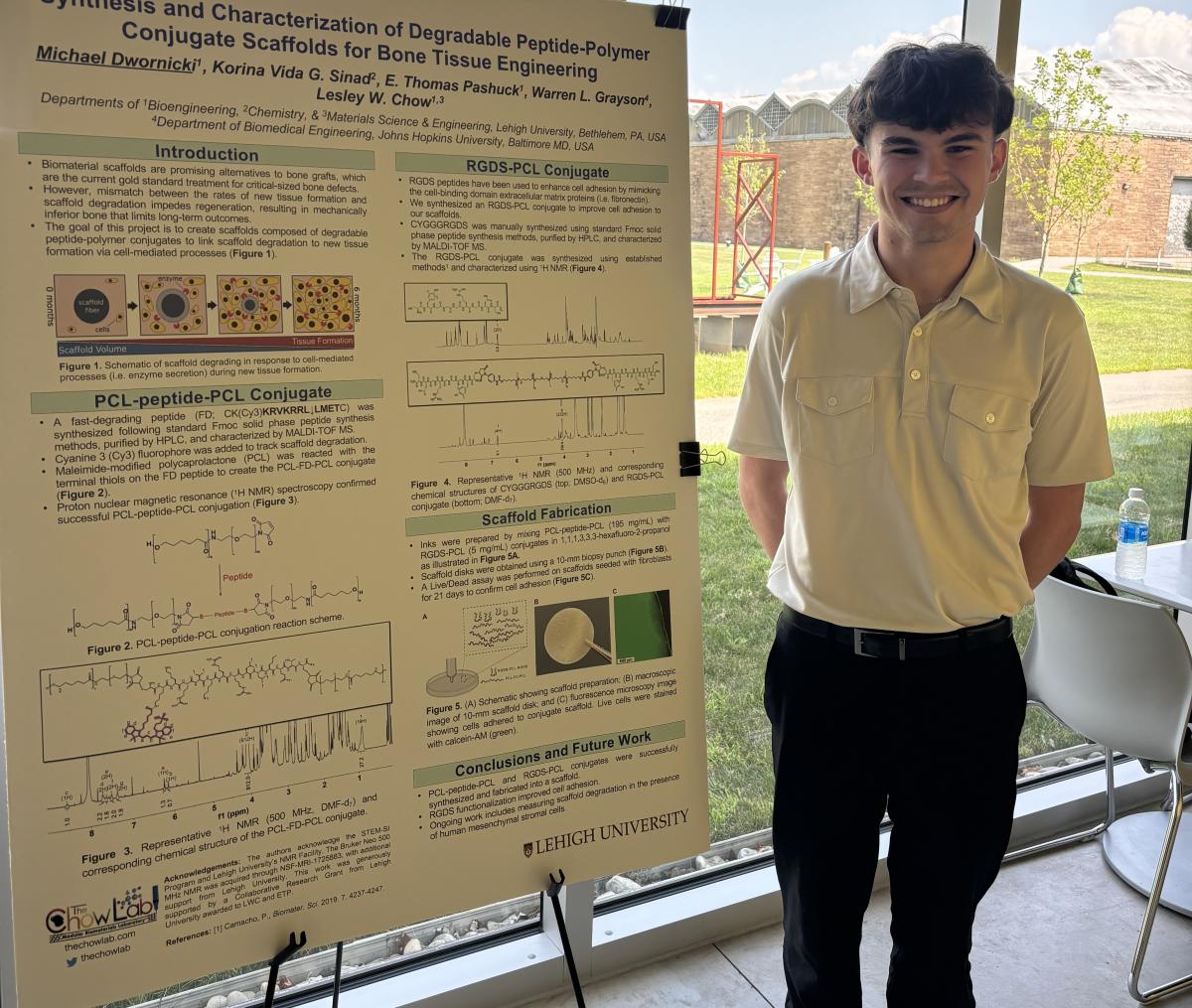
Michael Dwornicki, STEM-SI
“Synthesis and Characterization of Degradable Peptide-Polymer Conjugate Scaffolds for Bone Tissue Engineering”
“The goal of our project is to create scaffolds composed of peptide polymer conjugates that can match tissue formation. We’ve noticed in biomaterial scaffolds that the scaffold degeneration doesn’t match tissue formation, and our goal is to make them match…We did a 21-day study to ensure that the cells are adhering to our discs, and now we want to expand the study to track the degradation of the cells to make sure that the peptide can make it degrade at the speed we’d like. That's the next step.
“I personally have only taken up to general chemistry, so this was definitely a crash course in organic chemistry, peptides, all that stuff. We did scaffold fabrication, spectroscopy, all skills I didn’t have prior to doing STEM-SI.”
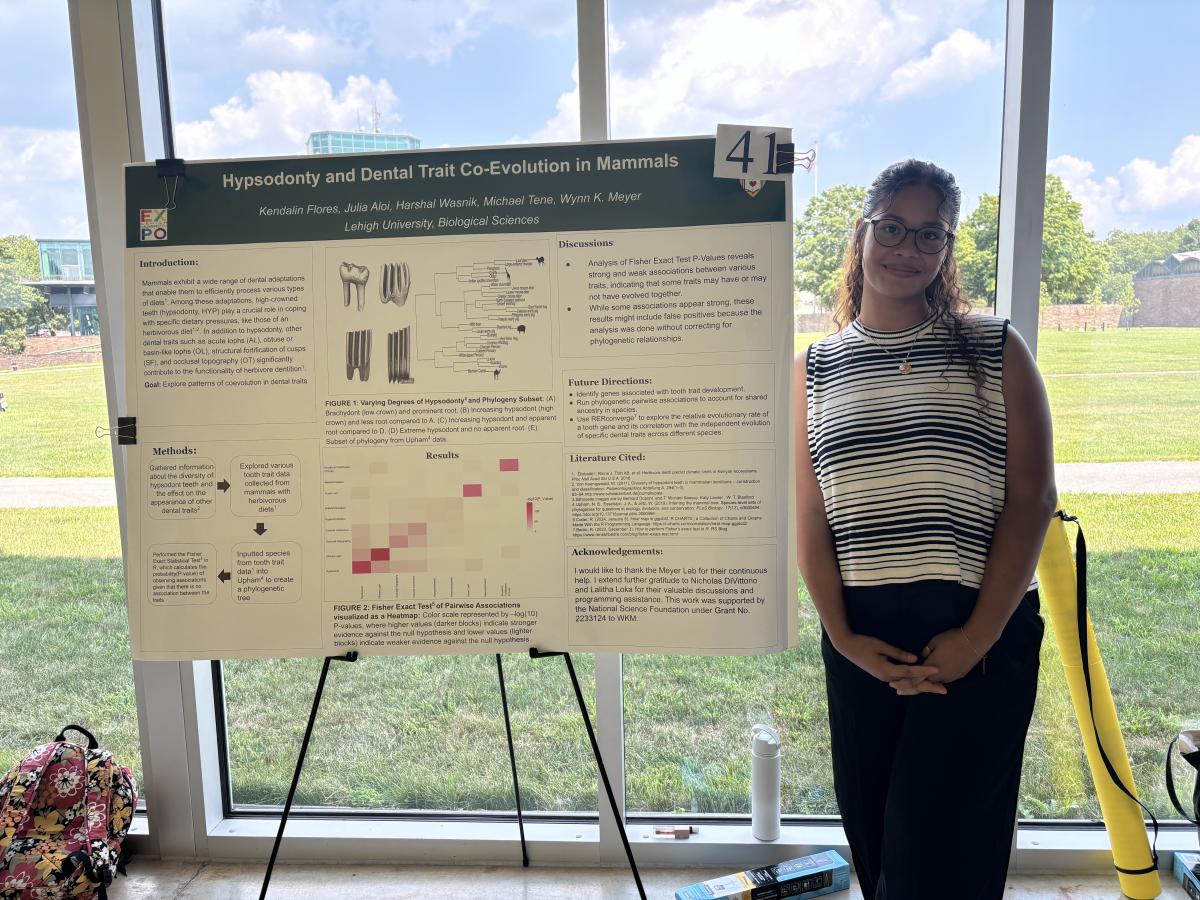
Kendalin Flores, STEM-SI
“Hypsodonty and Dental Trait Co-Evolution in Mammals”
“Mammals have a really wide range of dental mutations depending on their environment and diet. One of the mutations is hypsodont teeth. That’s basically more surface area in the crown of the tooth. I found good tooth trait data that classified a bunch of mammals. I ran the Fisher exact test; it tells the probability or the p value of observing an association between two traits in particular. So in our results [see pink blocks in image], you can see the mapping of the Fisher exact test. The darker blocks show stronger evidence against the null hypothesis, which is that there is no association between our traits, and the lighter blocks show weaker evidence against the null hypothesis. So we can see some strong and weak associations between a lot of traits which may or may not indicate that they have evolved together.
“I really learned how to work with people. We all have different projects and they are all related between the genetics and the evolutionary aspect, but we use very different software systems. But we were still able to come together and say, Hey, I’m struggling on this code. And figure it out. I couldn’t have done it without them.”
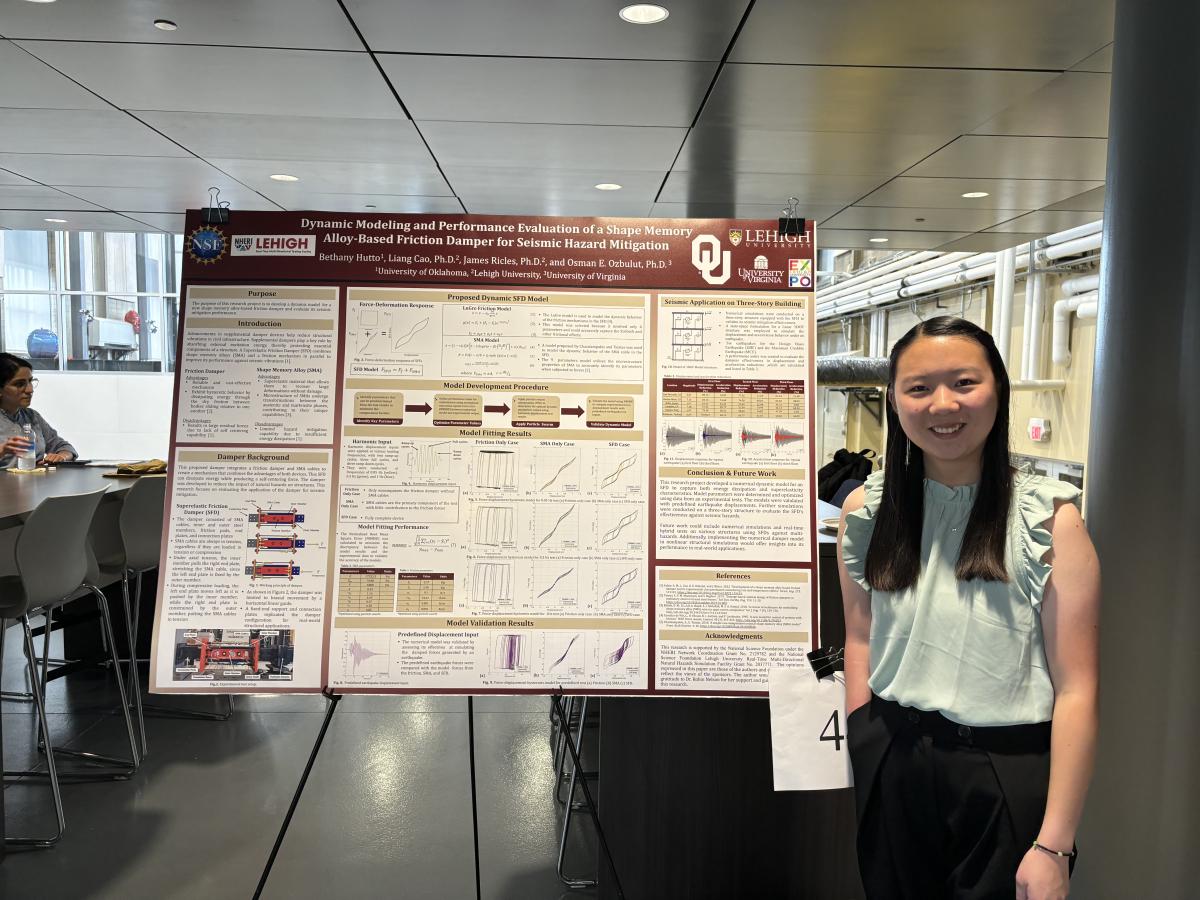
Bethany Hutto, STEM-SI and NHERI REU
“Dynamic Modeling and Performance Evaluation of Shape Memory Alloy-Based Friction Damper for Seismic Hazard Mitigation”
“I am part of the NHERI REU summer program, and I came here for 10 weeks to do testing at ATLSS research center. Osman Ozbulut is from the University of Virginia, and we collaborated. He contributed to the damper which I am using and testing.
My research involved numerical modeling of a superelastic friction damper. Using a friction mechanism combined with shape memory alloy cables increases the damping capacity of the device. I numerically modeled it by using the behaviors of each damper. And also with experimental test results, I was able to use those results to help model the damping. I determined the parameters and I was able to get a numerical model for those dampers, friction only, and when combined we were able to get the forces of these models.
For an application, we would use this damper to equip the structure to help mitigate the effects of natural hazards. Specifically my research focused on seismic hazards. So we had a three-story structure and using the simulation we put in earthquake data and were able to measure the displacement and the damper was effective in the testing. It has been nice to go to an experimental facility and do testing. And to work with researchers and see how the research process works.”
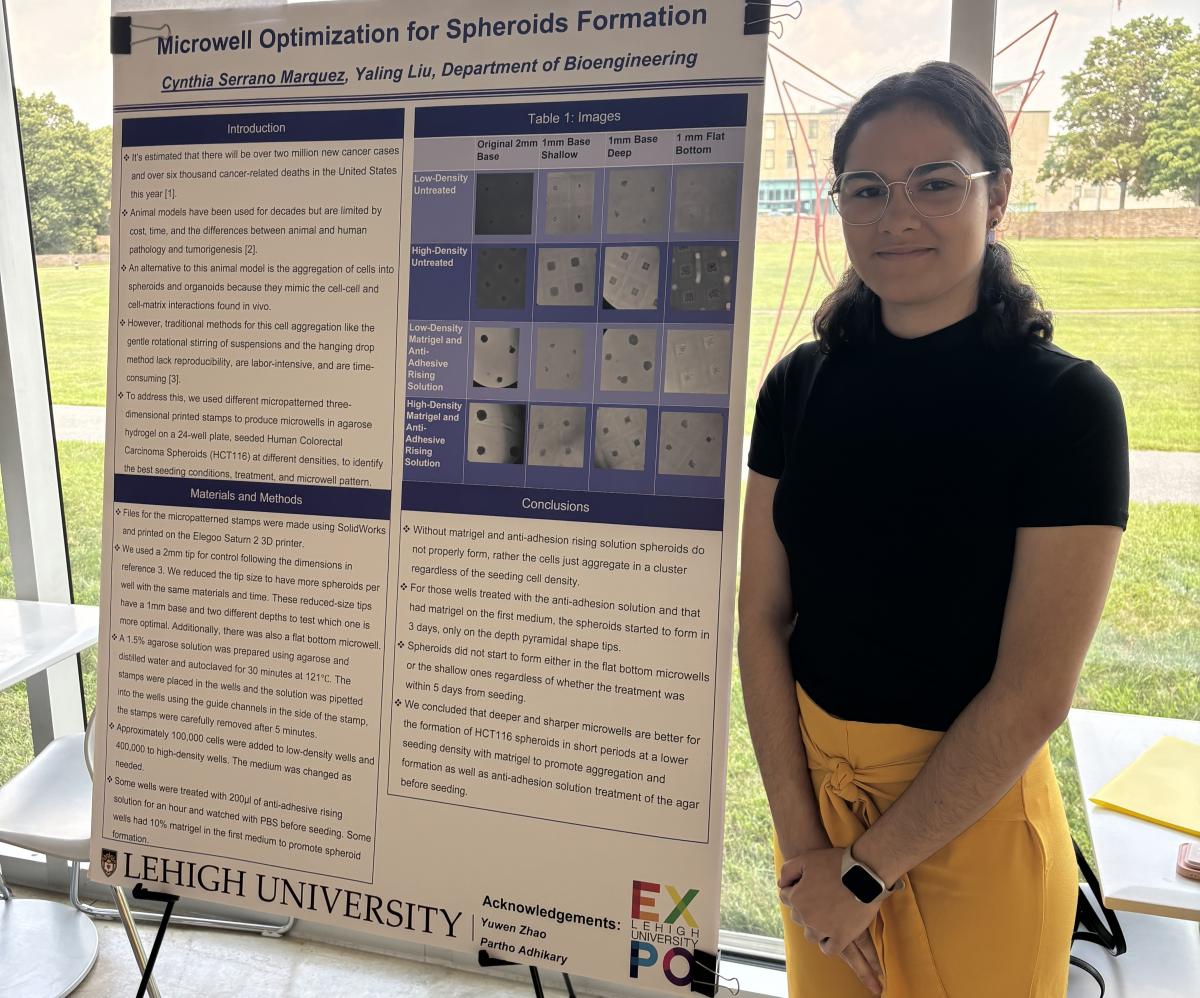
Cynthia Serrano Marquez, STEM-SI
“Microwell Optimization for Spheroids Formation”
“It is hard to reproduce the spheroids. The organelles were fine, but the asteroids were hard. So this summer I tried to find a way of doing it. We tried different stamp sizes and forms: we had a flat bottom one, a steeper one, a shallower one. And that wasn’t working so we took it another step and changed the cell density and that wasn’t working either, and then we added a gel and a solution to make sure it wasn’t the solution keeping the cells from sticking to the agar, and my cells did stick. They would aggregate into a spheroid, an actual sphere. The photo was taken on day 4, they start forming on day 3. Now that we know how to do it consistently, we are planning in the fall to do an adapted therapy drug treatment.
“I was very stressed because my plan was to do the adapted therapy this summer. But they weren’t forming consistently. Having support in the lab really helps. I’m an undergrad, so there’s a lot of things I just don't know. I had a lot of support from my lab mates, who were grad students, so that helped a lot.”
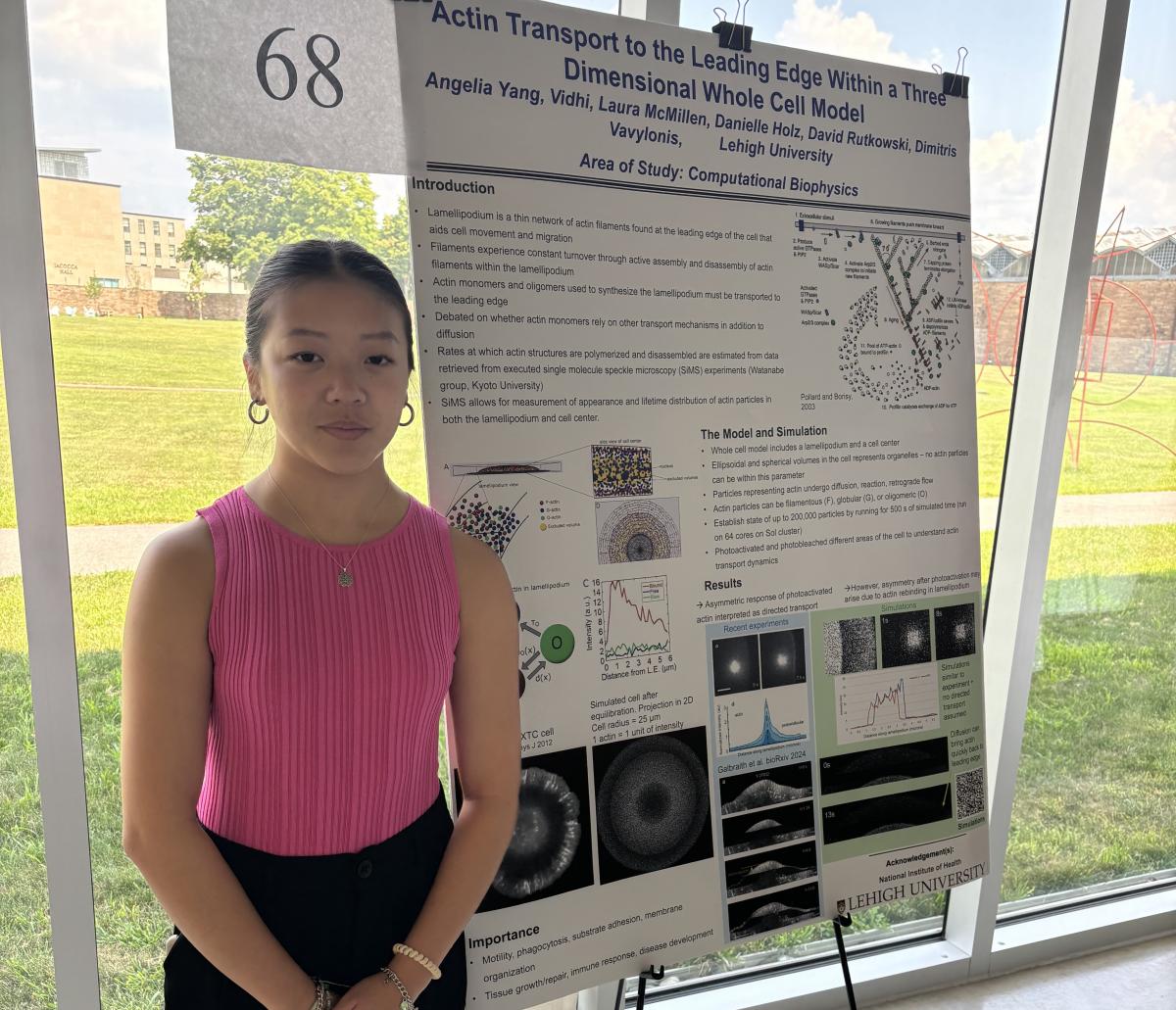
Angelia Yang, STEM-SI
“Actin Transport to the Leading Edge with a Three-Dimensional Whole-Cell Model”
“I’m a rising sophomore studying computer science and this summer I worked with Dr. Vavylonis on a project to help further understand the dynamics and intricacies of the structure in the cell called the lamellipodium, a thin projection of actin filaments. But in order to do that I was able to analyze and advance an original code that was created by a past graduate student; her name is Laura McMullen. Basically the lamellipodium works at the leading edge of a cell to aid cell movement and migration. The actin filaments undergo constant turnover, which means that they’re constantly being disassembled and reassembled. When they’re disassembled, they need a way to get transported back to the leading edge so that they can be recycled and reused again. It’s been debated how many transport mechanisms these monomers rely on. A lot of researchers believed that diffusion was the main if not only transport mechanism.
This project focused on a three-dimensional whole cell model of actin transport within the cell, through analyzing data from real-life single molecules speckle microscopy experiments. It definitely advanced my coding knowledge a lot.”
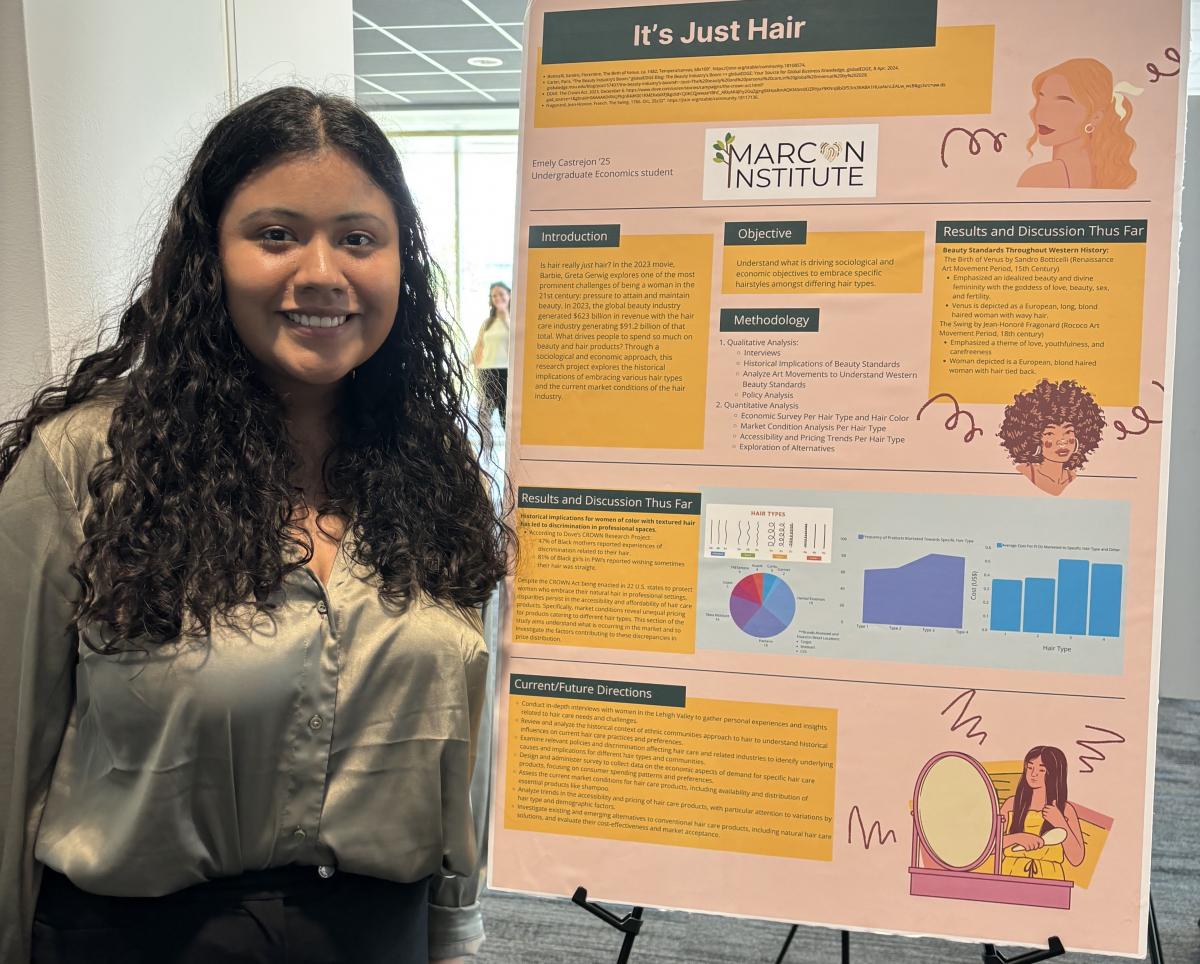
Emily Castrejon, Marcon Institute
“Is Hair Just Hair?”
“My project is focusing on the current market conditions and what is driving the current market conditions in hair products. I sampled 94 shampoo products, among the top eight brands that you can find at Target, CVS, and Walmart.
“For the 94 products I looked at cost and the biggest size they had. Essentially what I found with products that are marketed to people with type 3 and type 4 hair [curly and coily] is that it’s more expensive per average fluid ounce. I found it interesting how type 3 and type 4 hair were more expensive. For Shea Moisture the cost per fluid ounce was nearly a dollar, whereas for Aussie it was as low as 20 cents.
“So the question I’m trying to understand is why is it so expensive right now in the market to embrace curly and coily hair. And with my qualitative and quantitative approach I’m trying to understand the historical implications of embracing natural hair.
“I’m going to continue the project into the school year. I thought this was going to be one and done. But the more I research, the more curious I am, and the more questions I have. In terms of what I want to do post-undergrad, I want to go to grad school, and I haven’t decided what I want to do. I might want to do economics research and get a master’s degree in economics, or I might go to law school, or I might go to business administration. I just want to stay curious.”

Meriem El Batoul Bazine, Marcon Institute
“Improving Food Access at Primarily White Institutions for Marginalized Students: A Case Study of Lehigh University”
“I’m doing a survey at Lehigh on food insecurity, seeing which students experience it and giving a definition of it so people know that it’s a lot more common than they think it is. I’m specifically focusing on groups that tend to experience it more often, so for example graduate students or marginalized students, students of color. I want to find concrete data at Lehigh because you need those numbers in order to get funding. And to show people that it’s a real problem, that it’s students that you know, not an abstract student just pictured in their minds.
“Also I’m doing interviews with food pantries at different universities around the country on how they approach food insecurity, what’s their story, how did they start their food pantry, how did they keep it going, how did they get funding for it, but also what are the unique solutions that they’re doing for problems that come up for food insecurity. For example, stigmatization–people are scared to say ‘I need help.’
“Next, I have to finish all my interviews. We’re planning to send out a survey at the beginning of the school year or during the end of the semester because that’s when students start to experience food insecurity. I’ll need to finish the documentary and get all the data, and by the end of the year I want to be able to present the data to the provost and different organizations on campus to find out how we can fun
